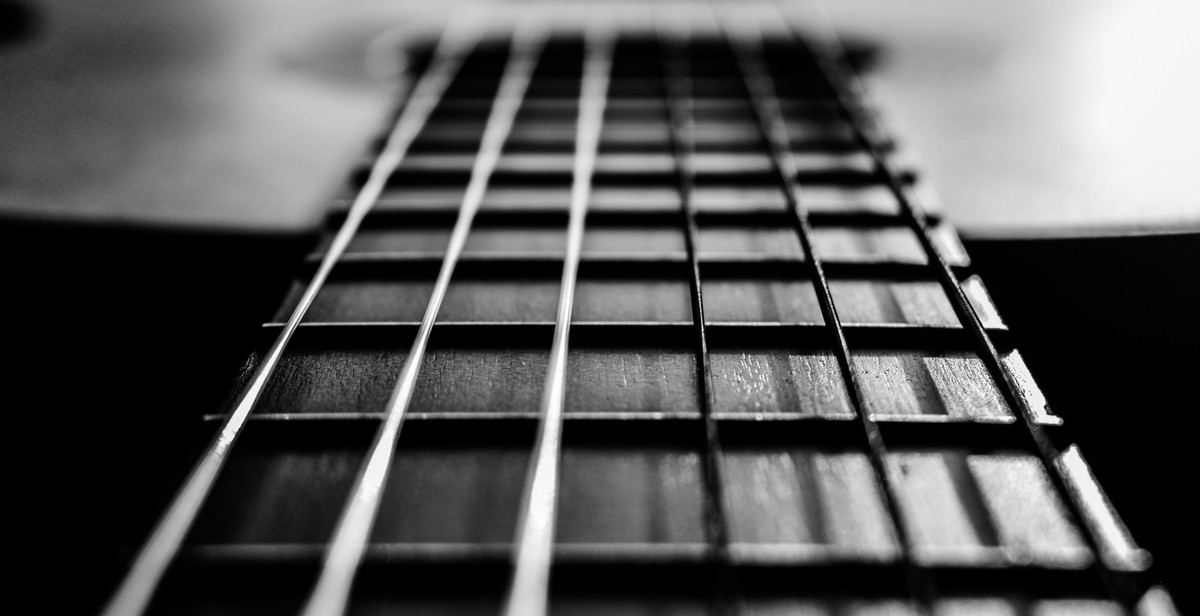How to Choose the Right Acoustic Guitar for Folk and Strumming Styles
If you are planning to buy an acoustic guitar for playing folk and strumming styles, it is important to choose the right instrument that suits your needs. Acoustic guitars come in different shapes, sizes, and materials, and each of these factors can affect the sound and playability of the guitar. Therefore, it is crucial to consider these factors when choosing an acoustic guitar for folk and strumming styles.
Factors to Consider When Choosing an Acoustic Guitar
Here are some factors to consider when choosing an acoustic guitar:
- Body Shape: The body shape of an acoustic guitar affects the sound it produces. For folk and strumming styles, a dreadnought or concert-shaped guitar is recommended as they produce a balanced and full-bodied sound.
- Top Material: The top material of an acoustic guitar affects the tone and resonance of the instrument. Solid wood tops such as spruce, cedar, and mahogany are recommended for their warm and rich tones.
- Neck Shape: The neck shape of an acoustic guitar affects the playability of the instrument. A comfortable and easy-to-play neck is recommended for strumming and chord playing.
- String Gauge: The string gauge of an acoustic guitar affects the playability and tone of the instrument. Light gauge strings are recommended for strumming and fingerstyle playing.
By considering these factors, you can choose the right acoustic guitar for your needs and preferences. In the following sections, we will discuss each of these factors in detail to help you make an informed decision.

Understanding Acoustic Guitars
Acoustic guitars are popular for their warm, rich, and natural sound. They are versatile instruments that can be used for various music genres, including folk and strumming styles. When choosing an acoustic guitar, several factors should be considered, including body shape and size, tonewood, neck and fretboard, strings and tuning, pickups and electronics.
Body Shape and Size
The body shape and size of an acoustic guitar have a significant impact on its sound. The most common body shapes are dreadnought, concert, jumbo, and auditorium. Dreadnought is the most popular because of its balanced sound and versatility. Concert guitars are smaller and produce a brighter sound. Jumbo guitars are larger and produce a deep and rich sound, while auditorium guitars are versatile and produce a balanced sound.
Tonewood
The tonewood used in an acoustic guitar affects its sound quality. The most common tonewoods are spruce, cedar, mahogany, and rosewood. Spruce and cedar are used for the top of the guitar and produce a bright and warm sound. Mahogany is used for the back and sides and produces a warm and mellow sound. Rosewood is used for the fingerboard and bridge and produces a bright and warm sound.
Neck and Fretboard
The neck and fretboard of an acoustic guitar affect its playability. The neck can be made of different materials, including mahogany, maple, and rosewood. The fretboard is usually made of rosewood or ebony. The neck shape can be either C-shaped or V-shaped, depending on the player’s preference. The fretboard radius also affects playability, with a flatter radius being more suitable for lead playing and a curved radius being more suitable for chords.
Strings and Tuning
The strings used in an acoustic guitar affect its sound and playability. The most common strings are made of steel or nylon. Steel strings produce a bright and loud sound and are suitable for strumming and fingerpicking. Nylon strings produce a warm and mellow sound and are suitable for classical and fingerstyle playing. The tuning of an acoustic guitar can be standard or alternate, depending on the player’s preference.
Pickups and Electronics
Pickups and electronics are optional features in acoustic guitars that allow them to be amplified. Pickups can be either magnetic or piezo, with magnetic pickups producing a brighter sound and piezo pickups producing a more natural sound. Electronics can include tone controls, volume controls, and built-in tuners.
| Tonewood | Characteristics |
|---|---|
| Spruce | Bright, balanced, and loud sound |
| Cedar | Warm, mellow, and softer sound |
| Mahogany | Warm, mellow, and focused sound |
| Rosewood | Bright, warm, and complex sound |

Choosing the Right Acoustic Guitar
Choosing the right acoustic guitar is essential for any guitarist, especially for those interested in playing folk and strumming styles. Several factors need to be considered when selecting an acoustic guitar, including playing style, budget, brand, and model.
Playing Style
When choosing an acoustic guitar, it is essential to consider your playing style. If you are interested in playing folk and strumming styles, you will need a guitar with a rich and warm tone. A guitar with a dreadnought or jumbo body shape is ideal for strumming as it produces a full and robust sound. On the other hand, if you prefer fingerstyle playing, a guitar with a smaller body shape, such as a concert or parlour guitar, will produce a more delicate and precise sound.
Budget
Another essential factor to consider when choosing an acoustic guitar is your budget. Acoustic guitars come in various price ranges, and the quality of the guitar often correlates with the price. It is important to set a budget and stick to it while considering the features and quality of the guitar. It is also important to note that a higher-priced guitar may not always be the best option, as it may not suit your playing style or preferences.
Brand and Model
Brand and model are also important considerations when choosing an acoustic guitar. Some well-known and reputable brands include Taylor, Martin, and Gibson. These brands offer high-quality guitars that produce excellent sound and are durable. However, there are also lesser-known brands that offer quality guitars at a more affordable price. It is important to research and read reviews on different brands and models to find the best fit for your playing style and budget.
| Pros | Cons |
|---|---|
| Well-known brands offer high-quality guitars | Higher-priced guitars may not always be the best option |
| Lesser-known brands offer quality guitars at a more affordable price | Quality may not always be consistent among lesser-known brands |
In conclusion, when choosing the right acoustic guitar for folk and strumming styles, it is essential to consider your playing style, budget, brand, and model. By taking these factors into account, you can find a guitar that suits your needs and preferences and will provide you with a rich and warm tone for years to come.

Top Acoustic Guitars for Folk and Strumming Styles
Choosing the right acoustic guitar for folk and strumming styles can be overwhelming, especially with the plethora of options available in the market. However, with the right knowledge and guidance, you can easily find the perfect guitar that suits your style and preferences. Here are some of the top acoustic guitars for folk and strumming styles:
Martin D-28 Dreadnought Acoustic Guitar
The Martin D-28 Dreadnought Acoustic Guitar is a classic and iconic guitar that has been used by many legendary folk and country musicians over the years. It has a solid Sitka spruce top, rosewood back and sides, and a mahogany neck, which all contribute to its warm and rich tone. The guitar also features a dreadnought body shape, which provides a powerful and balanced sound that is perfect for strumming and fingerpicking.
Taylor 214ce Grand Auditorium Acoustic-Electric Guitar
The Taylor 214ce Grand Auditorium Acoustic-Electric Guitar is a versatile guitar that is suitable for both strumming and fingerstyle playing. It has a solid Sitka spruce top, layered rosewood back and sides, and a slim and comfortable neck that makes it easy to play. The guitar also comes with Taylor’s Expression System 2 electronics, which provides a natural and dynamic amplified sound.
Gibson J-45 Standard Acoustic-Electric Guitar
The Gibson J-45 Standard Acoustic-Electric Guitar is a classic and iconic guitar that is known for its warm and full-bodied tone. It has a solid Sitka spruce top, mahogany back and sides, and a slim and comfortable neck that makes it easy to play. The guitar also comes with LR Baggs VTC electronics, which provides a natural and balanced amplified sound.
Seagull S6 Original Acoustic Guitar
The Seagull S6 Original Acoustic Guitar is a budget-friendly option that offers great value for money. It has a solid cedar top, wild cherry back and sides, and a silver leaf maple neck, which all contribute to its warm and balanced tone. The guitar also features a dreadnought body shape, which provides a powerful and resonant sound that is perfect for strumming and flatpicking.
Yamaha FG830 Solid Top Acoustic Guitar
The Yamaha FG830 Solid Top Acoustic Guitar is another budget-friendly option that offers great sound quality and playability. It has a solid spruce top, rosewood back and sides, and a slim and comfortable neck that makes it easy to play. The guitar also features a dreadnought body shape, which provides a powerful and balanced sound that is perfect for strumming and fingerpicking.
Overall, these guitars are some of the best options for folk and strumming styles, and they offer great sound quality, playability, and value for money. Whether you are a beginner or an experienced player, these guitars are definitely worth considering.

Maintenance and Care
Choosing the right acoustic guitar for folk and strumming styles is only half the battle. Proper maintenance and care are essential to ensure your guitar stays in excellent condition for years to come. Here are some tips on how to care for your guitar:
Cleaning and Polishing
Regular cleaning and polishing will keep your guitar looking new and help prevent damage. Use a soft, dry cloth to wipe down your guitar after each use. Avoid using any harsh chemicals or abrasive materials that can scratch the finish. To remove fingerprints and smudges, use a microfiber cloth or a guitar-specific cleaning solution. For polishing, use a guitar-specific polish or wax to protect the finish and keep it looking shiny.
Storage and Humidity Control
Proper storage and humidity control are crucial for maintaining the structural integrity of your guitar. When not in use, store your guitar in a hard-shell case or a guitar stand to prevent accidental damage. Avoid exposing your guitar to extreme temperatures, direct sunlight, or high humidity levels. Consider investing in a humidifier or dehumidifier to maintain the ideal humidity level for your guitar.
Regular Maintenance
Regular maintenance is essential to keep your guitar playing and sounding its best. Check your guitar’s strings regularly and replace them when they become worn or damaged. Keep the fretboard clean and conditioned with a guitar-specific fretboard oil. Check the tuning pegs and bridge for any signs of wear or damage and replace them if necessary. Finally, take your guitar to a professional luthier for regular maintenance and adjustments.
| Maintenance Checklist |
|---|
| Wipe down the guitar after each use |
| Use a guitar-specific cleaning solution to remove fingerprints and smudges |
| Store the guitar in a hard-shell case or guitar stand |
| Avoid exposing the guitar to extreme temperatures, direct sunlight, or high humidity levels |
| Replace worn or damaged strings |
| Clean and condition the fretboard with a guitar-specific fretboard oil |
| Check the tuning pegs and bridge for wear or damage |
| Take the guitar to a professional luthier for regular maintenance and adjustments |
